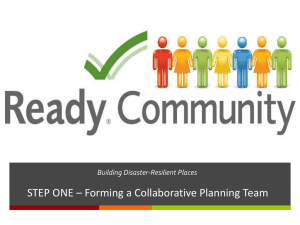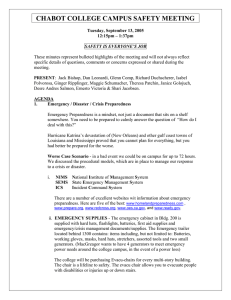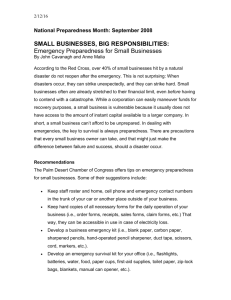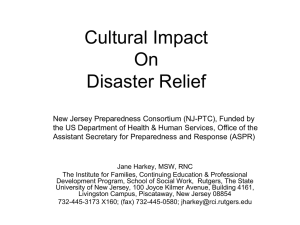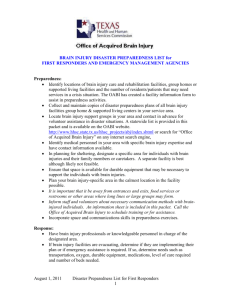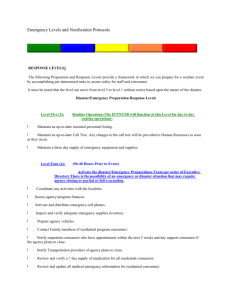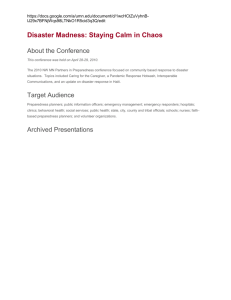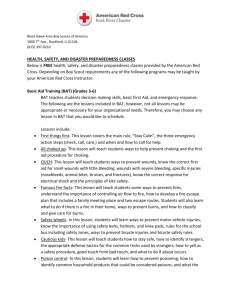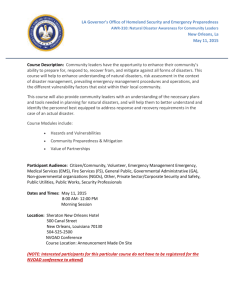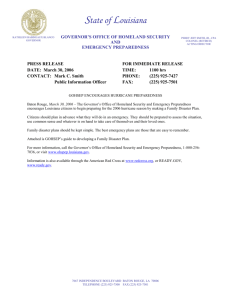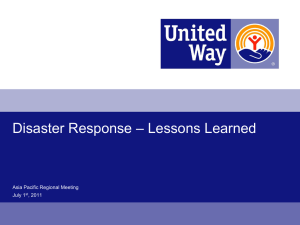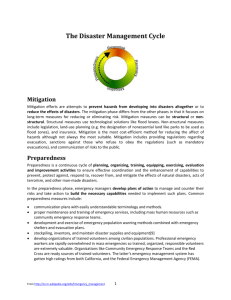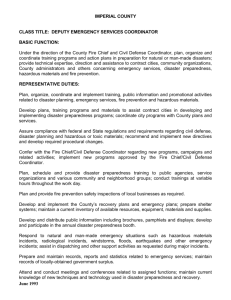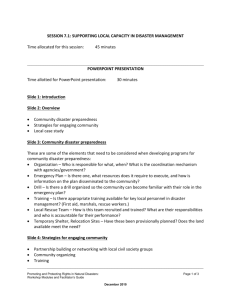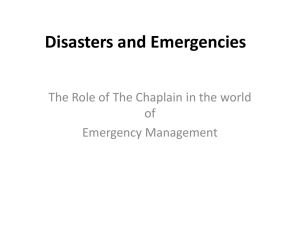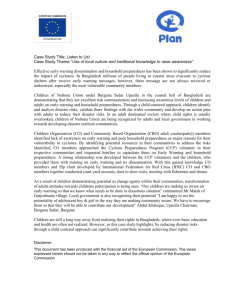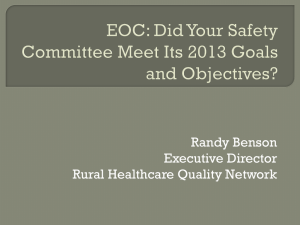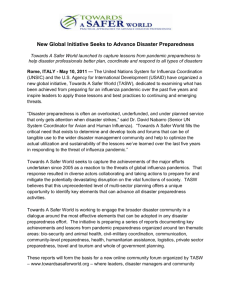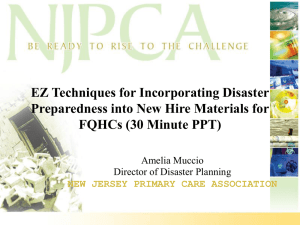Utah Webinar slides
advertisement
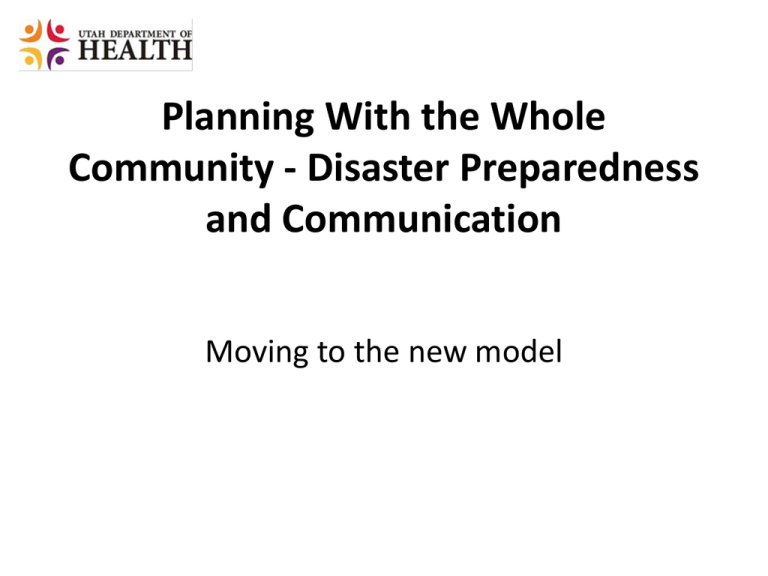
Planning With the Whole Community - Disaster Preparedness and Communication Moving to the new model Step 1: Eliminate discrimination in our thinking and vocabulary Putting labels on people is counter productive. “Special” is Not Equal “People with disabilities” A protected class: Protected from discrimination as defined by the ADA and other state and federal civil rights laws that detail the right to equal participation and the use of services. People with disabilities1. More people have life limiting A “protected” conditionsclass: than is commonly recognized. Protected from discrimination as defined by2.federal civil rights laws ability such asisADA Variation in human andordinary, by other state civil rights laws that not special, and affects detail the of right in, most ustoatequal someparticipation point in our andlives. the use of services People with Access and Functional Needs 1. People first 2. Describes a class that expands and contracts based on the situation 3. Allows for people with life limiting conditions who may not be included in the “people with disabilities” category Step 2: Plan “with” not “for” Everyone in the Community Organize a Task Force Federal law mandates “Inclusion” Pandemic and All Hazard Preparedness Act of 2006 Executive Order 13166 Post-Katrina Emergency Management Reform Act (PKEMRA) of 2006 See FEMA’s Non-discrimination Principles of the Law: http://www.fema.gov/oer/reference/principles.shtmts laws Planning Flow Chart typical revised “Special Needs” Registries 10 years of experience indicate that they do not work. People with unrealistic expectations of service may not provide for their own preparedness. Legal requirements of the ADA Pre-location: Working with Whole Community Resources 1. Some people with access and functional needs are affiliated with Community Based Organizations (CBO’s) These trusted organizations keep track of their members. They know who to contact. Emergency Managers will find willing allies in CBO’s who will work with them to prelocate individuals. See: Guidance for Integrating Culturally Diverse Communities into Planning for and Responding to Emergencies: A Toolkit http://www.hhs.gov/ocr/civilrights/resources/specialtopics/emergencyp re/omh_diversitytoolkit.pdf Pre-location: Other Community Resources 2. Emergency Managers must involve other members of the community to develop information. CERT, Neighborhood Watch, Churches, Charities, and Food Banks can be valuable resources. Whole Community Planning 1. Identify and locate People with Access and Functional Needs, and people with diverse racial and ethnic, backgrounds in your community. 2. Form sustainable partnerships to build trust with community representatives. 3. Design and test exercises that reflect the community and incorporate scenarios that explicitly involve People with Access and Functional Needs including LEP. Step 3: Use the Skills of Trusted Individuals and Organizations They are the conduit for passing information before during and after a disaster Disaster Communication-with the whole community 1. State and local emergency managers are required to deliver disaster information in Real Time 2. The ADA and other federal and state civil rights laws require that information be delivered equally. 3. At least 32 refugee languages are spoken in Utah. Real Time Information Network for Refugees in a Disaster Requires the Cooperation of Refugee Community Organizations State Refugee Resettlement Authority Office of Emergency Management Disaster information Emergency Management State Refugee Authority Trusted Community Leadership Population Preparedness for People with Disabilities and other Access and Functional Needs including LEP Pandemic Flu Mitigation 72 Hour Emergency Kits Preparedness Brochures Step 4: Build Capacity for Culturally and Linguistically Appropriate Services (CLAS) For information, contact Rich Foster: rfoster@utah.gov 801-273-6607

